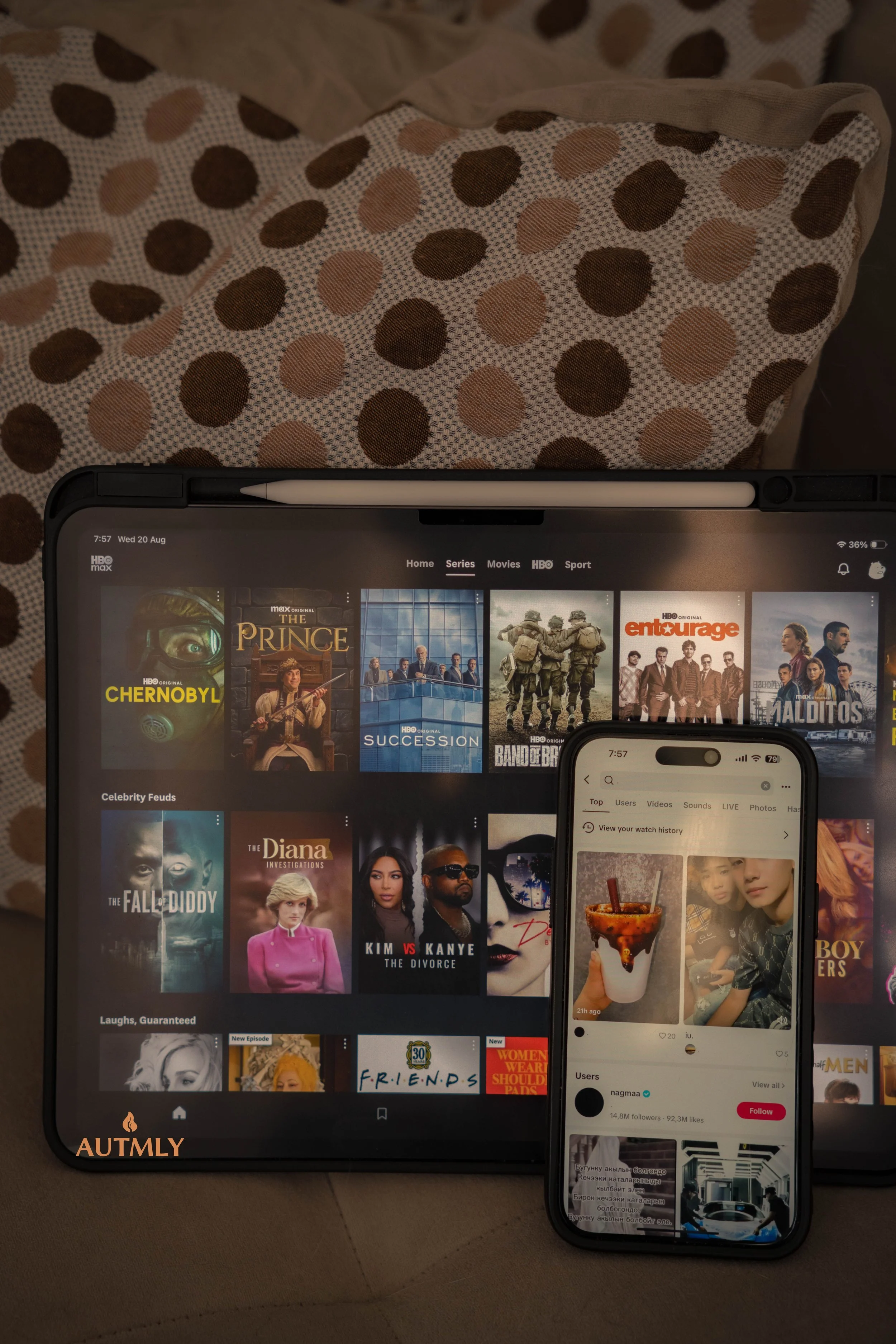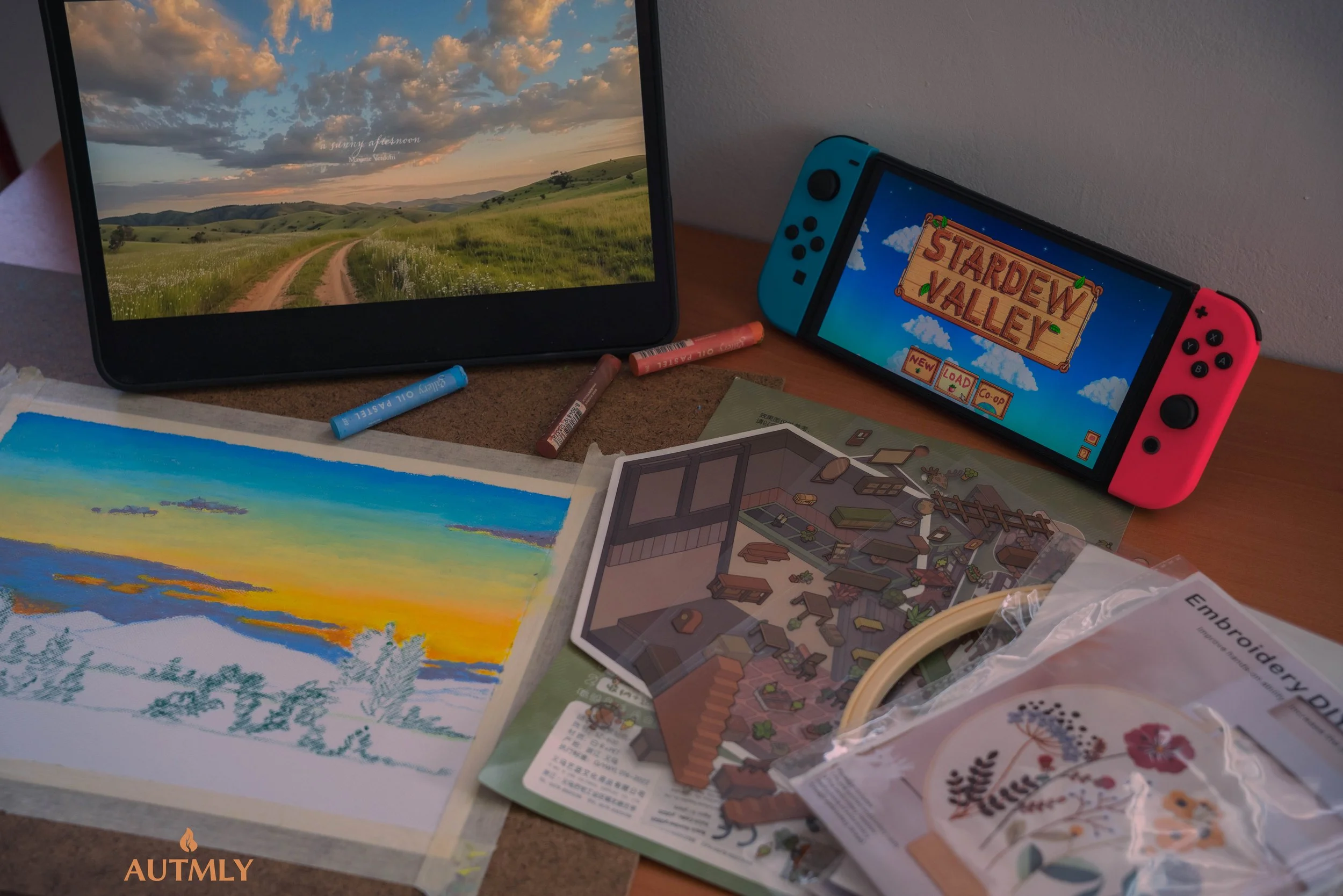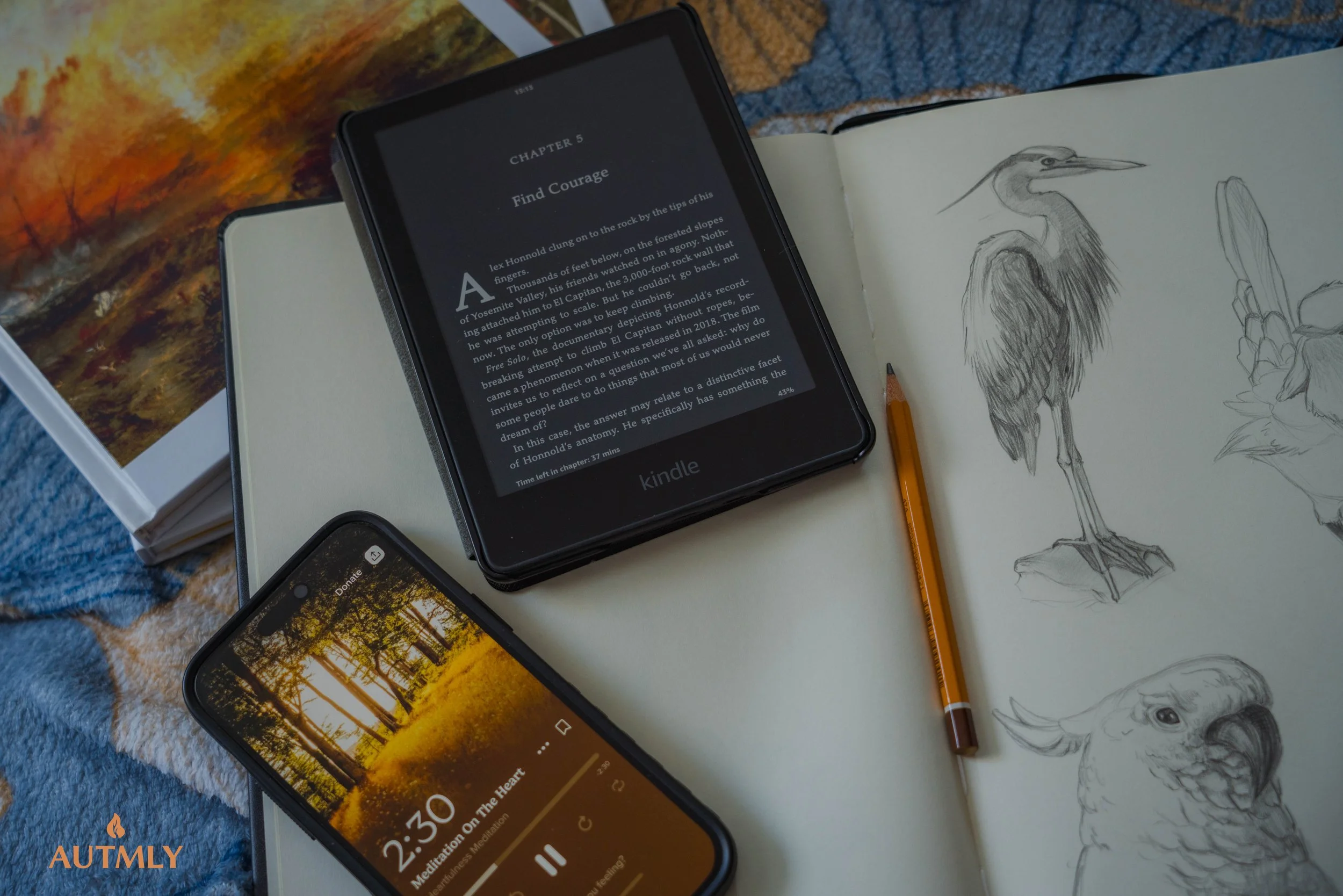Rethinking Relaxation: Resting the Mind, Not Just the Body
There have been so many times when I've slipped into hours of doomscrolling, convincing myself that because I was curled up on the couch, I was giving myself some much needed rest. But when I finally put the phone down, I usually feel more drained, sometimes even guilty, like the break had backfired. And that's what got me researching on the topic of real rest.
Original photo - taken and owned by Autmly
The Science of True Downtime
I'm sure that most of us equate lazily scrolling through social media or binge-watching shows with relaxation. However, research warns that endless screen time actually keeps our brains reactive and alert - it doesn't let them truly unwind.
So how to give the brain a proper break then? Neuroscience offers some clues. When we stop processing information, the brain shifts into a "default mode" state or DMN(default mode network). This mode kicks in during introspection - daydreaming, creative thinking, recalling memories - and is thought to replenish attention and consolidate learning. So instead of constant input, the brain needs periods of quiet and low stimulation to let this process happen. Psychology experts also note that downtime isn't about staring at a blank wall - it's about unfocused mental activity. In short, true mental rest involves engaging the mind elsewhere or not at all, not absorbing rapid-fire content.
Passive vs. Intentional Leisure
Not all leisure is created equal. The difference isn't whether you're "doing something" or not, but whether the activity is:
1. Active and Intentional - chosen on purpose, gently engaging, restorative.
For example hobbies like drawing, embroidery, baking, reading etc, often involve creativity, sensory engagement, or flow states, which can improve mood, reduce stress, and help with restoring mental energy.
2. Passive and Numbing - done by default, usually with overstimulation.
Like endless scrolling or binge-watching without awareness for example. They tend to leave the brain overstimulated but under-rested.
Original photo - taken and owned by Autmly
Research-Backed Tips for True Mental Rest
Luckily, many research in neuroscience and psychology gives us inside into how to properly give our minds a break.
Schedule mini brain breaks
Even 5-10 minutes of closing our eyes, taking slow breaths and letting your mind gently drift can be helpful.
Unplug before bed
Try swapping screen time for quiet stillness at least 30-60 minutes before sleep. Activities such as stretching, siping tea or practicing deep breathing can dramatically improve sleep quality.
Do "mindless" tasks or relax with gentle movement
Cleveland Clinic experts recommend simple, automatic tasks or even short walks. Yes, as odd as it might seem, chores like vacuuming or washing dishes can actually let your mind switch off its focused mode. Nature walking on the other hand is proven to reduce stress in the brain's fear centre(amygdala) and helps attention restore.
Practice mindfulness or meditation
Numerous studies show that even brief mindfulness exercises rewire the brain for relaxation. You don't need years of practice, simple guided breathing can quiet the mental chatter.
Choose active rest
Combining mild exercise with social activity can actually boost your energy and mood more that just passive sitting. Meeting a friend for a slow walk or doing gentle yoga engages the body but still gives the mind a positive break.
Original photo - taken and owned by Autmly
Ultimately, the key is intention. Letting your brain wander in a safe, pleasant way replenishes attention and creativity. Some cozy activities like reading, baking, embroidery, or even playing a gentle game, can also engage our senses or creativity in a calming way. By unlearning the old habit of passive screen-time "rest", and by giving yourself real moments of quiet, you can end the day calmer, more centered, and truly refreshed.
Thank you for reading and I hope I see you next time. 🍂
Keep your heart cozy - no matter the season.
Sources used:
- Harvard Health on doomscrolling's impact:
- A peer-reviewed study on "mindless scrolling" and well-being:
- A Vice article synthesizing research on TV and mental rest:
- A systematic review of meditation's brain benefits:
- Nature/Science studies on nature walks reducing stress:
- Cleaveland Clinic guide explaining the brains default mode network and what truly count as "downtime":
https://health.clevelandclinic.org/why-downtime-is-essential-for-brain-health



